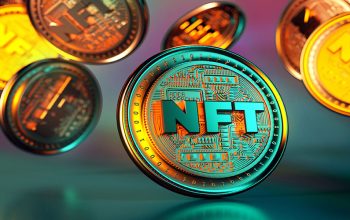Introduction
In the rapidly evolving world of blockchain technology, Non-Fungible Tokens (NFTs) have gained significant popularity. NFTs represent unique digital assets, such as artworks, collectibles, or virtual real estate, that can be bought, sold, and traded on blockchain platforms. As the NFT market continues to grow, the security of these digital assets becomes crucial to protect both creators and collectors. One important aspect of NFT security is metadata, which plays a vital role in safeguarding the integrity and authenticity of these digital assets.
What are NFTs?
Definition of NFTs
NFTs, or Non-Fungible Tokens, are digital assets that use blockchain technology to certify their uniqueness and ownership. Unlike cryptocurrencies like Bitcoin or Ethereum, which are fungible and can be exchanged on a one-to-one basis, NFTs are unique and indivisible.
How NFTs work
NFTs are created using smart contracts on blockchain networks, typically Ethereum. These smart contracts contain specific information about the digital asset, including its metadata. Once minted, NFTs can be bought, sold, and traded on various NFT marketplaces.
The Importance of NFT Security

- Vulnerabilities in NFTs
While NFTs offer exciting opportunities, they are not immune to security risks. Some common vulnerabilities include hacking attacks, unauthorized duplication, and fraudulent listings on NFT marketplaces. It is essential to address these concerns to protect the value and reputation of NFTs.
- Role of Metadata in NFT Security
Metadata provides crucial information about NFTs, such as their title, description, creator, and provenance. By properly utilizing metadata, NFT creators and collectors can enhance the security and trustworthiness of these digital assets.
Understanding Metadata
- Definition of Metadata
Metadata refers to descriptive information that provides context and additional details about a particular piece of data. In the case of NFTs, metadata helps define the characteristics and attributes of the digital asset.
- Types of Metadata in NFTs
There are various types of metadata associated with NFTs. Some common examples include title, description, image or media files, creator information, creation date, edition number, and provenance details. All these metadata elements contribute to the overall security and authenticity of the NFT.
How Metadata Enhances NFT Security
- Unique Identifiers and Ownership
Metadata in NFTs includes unique identifiers that establish ownership and differentiate one digital asset from another. This ensures that NFTs cannot be duplicated or tampered with, providing a secure way to prove ownership.
- Authenticity and Provenance
Metadata plays a crucial role in establishing the authenticity and provenance of NFTs. By including information about the creator, creation date, and any relevant certifications or verifications, metadata provides transparency and builds trust among collectors.
- Intellectual Property Protection
Metadata allows NFT creators to embed copyright information, licensing terms, and intellectual property details within the digital asset. This helps protect their creations from unauthorized use or infringement.
- Interoperability and Standards
Metadata also enables interoperability among different NFT platforms and ecosystems. By adhering to standardized metadata formats, NFTs can seamlessly interact with various marketplaces, wallets, and applications, enhancing their accessibility and security.
Best Practices for Metadata in NFTs
Accurate and Relevant Information
NFT creators should ensure that the metadata associated with their digital assets contains accurate and relevant information. This includes providing a comprehensive description, high-quality images or media files, and any additional details that add value to the NFT.
Immutable and Tamper-Proof Metadata
To maintain the integrity of NFTs, metadata should be stored in a tamper-proof manner using blockchain technology. Once recorded on the blockchain, the metadata becomes immutable, making it resistant to alteration or manipulation.
Standardization and Compatibility
Standardizing metadata formats and adopting interoperable standards is crucial for the widespread adoption of NFTs. By following established protocols, NFT creators and collectors can ensure their digital assets can seamlessly interact with different platforms and wallets.
Metadata Encryption and Privacy
As metadata often contains sensitive information, such as personal details or intellectual property rights, it is essential to encrypt and protect this data. Utilizing encryption techniques ensures that only authorized individuals can access the metadata, enhancing the overall security of NFTs.
Challenges and Future of NFT Security
Scalability and Network Congestion
As the popularity of NFTs continues to grow, blockchain networks face challenges in terms of scalability and network congestion. Scaling solutions, such as layer-two protocols and improved network infrastructure, are being developed to address these issues and enhance the security and efficiency of NFT transactions.
Advancements in NFT Security
The field of NFT security is continuously evolving, with researchers and developers exploring new methods and technologies to enhance the protection of digital assets. Advancements in areas like cryptography, decentralized identity, and consensus mechanisms hold great promise for the future of NFT security.
Metadata Standards for NFTs
Metadata standards play a significant role in ensuring consistency and interoperability within the NFT ecosystem. Various organizations and communities are actively working on developing and promoting metadata standards specifically tailored for NFTs. These standards define the structure, format, and required fields for metadata associated with NFTs, enabling seamless integration across different platforms and marketplaces.
One prominent example of an NFT metadata standard is the ERC-721 standard introduced by Ethereum. This standard provides a blueprint for the creation of NFTs and includes guidelines on the essential metadata fields that should be included, such as name, description, and image. Adhering to these standards helps streamline the creation, distribution, and consumption of NFTs, ultimately enhancing their security and accessibility.
Metadata and Secondary Market Transactions
Metadata plays a crucial role in the secondary market transactions of NFTs. When an NFT is resold or traded on secondary marketplaces, metadata provides important information about the asset’s history, previous ownership, and any accompanying rights or licenses. This transparency allows potential buyers to assess the authenticity and value of the NFT, instilling confidence in the transaction.
Additionally, metadata can also include information about any royalties or revenue sharing arrangements that may be tied to the NFT. This ensures that creators receive appropriate compensation when their NFTs are resold, addressing a significant concern in the art industry where artists often do not benefit from the increasing value of their work.
Metadata Curation and Moderation
Metadata curation and moderation play a crucial role in maintaining the integrity and quality of NFT platforms and marketplaces. With the increasing volume of NFTs being created, it becomes essential to have mechanisms in place to filter out inappropriate or misleading metadata that may violate community guidelines or intellectual property rights.
NFT platforms employ various approaches to metadata curation and moderation. This can involve a combination of automated algorithms, community reporting mechanisms, and human moderators who review and verify the accuracy and appropriateness of metadata associated with NFTs. By ensuring the reliability and trustworthiness of metadata, platforms can provide a safer and more enjoyable experience for creators, collectors, and investors alike.
NFT Security Audits and Certifications
As the NFT ecosystem grows, so does the need for robust security measures. NFT creators and collectors are increasingly recognizing the importance of conducting security audits and obtaining certifications to ensure the safety and integrity of their digital assets.
Security audits involve a comprehensive assessment of the smart contract code, including the metadata implementation, to identify potential vulnerabilities or weaknesses that could be exploited. These audits are typically performed by specialized firms or independent auditors with expertise in blockchain security.
Furthermore, some organizations offer NFT security certifications to provide an added layer of trust and confidence in the marketplace. These certifications verify that the NFT and its associated metadata meet specific security standards and best practices, offering peace of mind to both creators and collectors.
Metadata and NFT Ownership Verification
Metadata plays a crucial role in verifying the ownership of NFTs. By including relevant information such as the creator’s wallet address and transaction history, metadata allows collectors and investors to validate the authenticity and ownership of an NFT. This verification process helps prevent fraud and ensures that the rightful owner is recognized and acknowledged.
Furthermore, metadata can also include links to external platforms or marketplaces where the NFT has been previously listed or sold. This traceability enables potential buyers to conduct due diligence and gain insights into the asset’s history, provenance, and value.
Metadata and NFT Discoverability
Metadata is instrumental in improving the discoverability of NFTs within marketplaces and search engines. When creators provide accurate and detailed metadata, it becomes easier for collectors and investors to find specific NFTs based on their interests, preferences, or specific criteria.
Optimizing metadata for search engine optimization (SEO) enhances the visibility of NFTs beyond dedicated marketplaces. By incorporating relevant keywords, descriptions, and tags within the metadata, creators can increase the chances of their NFTs appearing in search results, attracting potential buyers and expanding their reach.
NFT Metadata and Smart Contracts
NFT metadata is closely intertwined with smart contracts, the underlying technology powering NFTs. Smart contracts contain the logic and instructions that govern the behavior and properties of NFTs, including their metadata. Through the integration of metadata within smart contracts, NFTs become self-contained and self-descriptive digital assets.
Smart contracts can be programmed to enforce specific rules and conditions related to metadata, such as ensuring that certain fields are mandatory or restricting the modification of critical metadata elements. This ensures the integrity and consistency of the NFT’s metadata throughout its lifecycle, providing an additional layer of security and trust.
Metadata and NFT Authentication
Metadata plays a vital role in authenticating the legitimacy and originality of NFTs. By including details about the creator, provenance, and any accompanying certificates of authenticity, metadata provides verifiable information that establishes the uniqueness and value of the digital asset.
To further enhance NFT authentication, advanced technologies such as digital signatures and blockchain timestamps can be incorporated into the metadata. These technologies enable the creation of irrefutable evidence that attests to the authenticity and integrity of the NFT, providing assurance to buyers and collectors.
Conclusion
Metadata plays a crucial role in ensuring the security, integrity, and authenticity of NFTs. By leveraging metadata effectively, creators and collectors can establish trust, protect their intellectual property, and enhance the overall value of digital assets. As the NFT ecosystem evolves, it is essential to adopt best practices and stay updated with advancements in NFT security to safeguard this exciting new form of digital ownership.
Pranav is a tech, crypto & blockchain writer based in London. He has been following the development of blockchain technology for several years.




